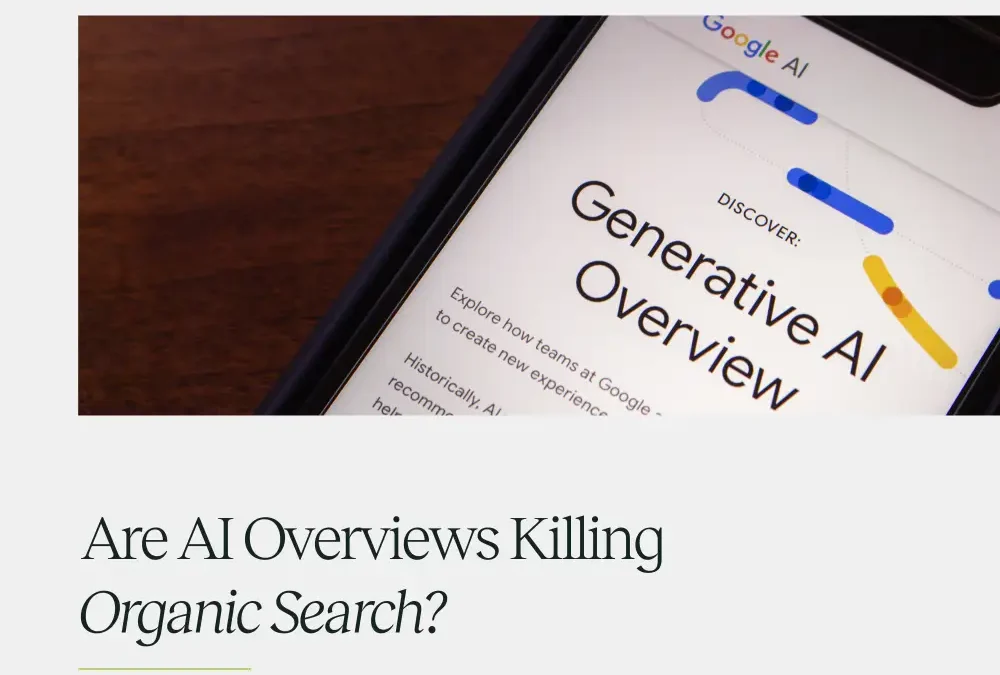In recent years, generative AI tools like ChatGPT and Google’s new AI modes have changed how people search, explore, and buy. Users are increasingly skipping standard search result pages and interacting with AI directly, seeking answers, comparisons, recommendations, and even purchase prompts within the AI interface itself.
For marketers, this presents both a risk and an opportunity. If your brand isn’t visible inside those AI responses, you may be excluded from critical decision points. But if you design your presence with AI in mind, you can turn visibility into conversion.
Here’s how Platform Marketing Agency helps clients shift from chasing clicks to becoming the answer.
Why AI tools now influence sales (beyond mere awareness)

- Traditional funnels are collapsing. People no longer strictly “search → browse → decide → buy.” Instead they may ask an AI, get instant guidance, then click through or convert inside the same interface.
- Some data suggests that a significant share of AI responses include only a handful of sources, which means only a few brands get cited.
- Because AI can deliver answers directly, many clicks are now “zero-click”, users get what they need without visiting websites. That makes it essential to be part of the narrative inside AI.
- But being part of the answer isn’t automatic. You have to design content and presence in a way that AI models view as credible, structured, and trustworthy.
Optimising content and presence for AI visibility
Here’s how you can make your brand AI-citable:
Use highly structured, machine-friendly formats
AI loves content it can parse easily. So favor:
- Comparison tables (feature vs feature, pros/cons)
- FAQ and Q&A sections that answer high-intent queries
- “How-to” or step-by-step guides
- Short summaries or “key takeaways” sections at the start
- Visual elements (charts, screenshots, annotated images)
- Interactive tools (calculators, quizzes, decision helpers)
These formats help AI models summarise and cite your content more reliably, because the structure reduces ambiguity.
Lead users with mid-funnel tools
Rather than waiting until someone clicks through to a long article, embed tools that help decision-making right inside your content. Examples:
- ROI calculators
- “Which product best fits you?” quizzes
- Comparison wizards
- Interactive demos
These not only drive engagement, they also generate structured, high-value content that AI is more likely to reference.
Capture mentions and citations in external ecosystems
AI models don’t only pull from your website. They scrape forums, expert roundups, review blogs, YouTube, Reddit, and niche publications. To get cited:
- Pitch thought leadership pieces to industry blogs
- Get included in “best of” roundups or comparison lists
- Publish video demos or product explainers on YouTube
- Engage in relevant forums or discussion communities
- Encourage reviews and testimonials on third-party sites
Every external mention acts as a signal of credibility and gives AI models more sources to link to you.
Technical foundations that support AI inclusion
Visibility in AI doesn’t happen by magic. You need a solid technical base:
- Ensure all important pages are indexed and crawlable (no blocking robots.txt or noindex where you need visibility)
- Use schema / structured data markup (FAQ schema, product schema, review schema) so AI crawlers understand your content’s meaning
- Write clean, semantic title tags, meta descriptions, headings, and alt text
- Avoid keyword stuffing, focus on clarity and relevance
- Use short, logical paragraphs and subheadings to improve scanability
- Maintain good site speed, mobile usability, and accessibility
These practices don’t guarantee AI inclusion, but they remove barriers and help models interpret your content correctly.
Measuring AI-driven impact and feedback loops
Because many interactions may not produce a direct click, you’ll want to rethink metrics:
- Use UTM parameters or tracking tokens for known AI referral sources
- Ask “How did you hear about us?” in lead forms (with an option for AI / ChatGPT)
- Use session recording tools (Hotjar / FullStory) to see how AI-origin users behave
- Monitor conversions and engagement (not just raw traffic)
- Run A/B tests on content formats optimised for AI citation
- Track mentions of your brand in external writeups, roundups, and forums
These data loops help you understand which AI-friendly content actually moves the needle.
Common mistakes to avoid
- Chasing clicks over conversions: ranking high in AI doesn’t matter if the content doesn’t lead somewhere
- Ignoring off-site reputation: if you don’t get cited externally, you’ll often be omitted
- Relying purely on traditional SEO: the rules are similar, but you need to think in summary, structure, and trust rather than keywords alone
- Overcomplicating content: AI models prefer clarity and direct answers; fluff or meandering sections reduce chances of citation
- Neglecting schema or structured markup: without explicit signals, AI may misinterpret or skip your content altogether
Conclusion
Generative AI tools aren’t just a novelty, they are reshaping how customers learn, compare, and decide. For marketers, this means the real battleground is not getting clicks, but becoming part of the answer.
At Platform, we believe the best futureproof businesses are those that shift from “publish and hope” to “design for AI conversion.” By combining structured content, interactive assets, off-site citations, technical foundations, and feedback loops, you can turn ChatGPT and AI search experiences into reliable revenue streams.
If you’d like us to audit your content for AI readiness, or help build AI-first strategies, let’s talk.




